Research and Development of Self-Contained Water Injection Systems
Abstract
1. Introduction
- Engine performance improvement or
- Improved fuel consumption
2. Motivation
Competing on-Board Water Sources
- Harvesting air humidity from ambient (e.g., by A/C condensate)
- Surface Water (e.g., rain water collected from vehicle body)
- Exhaust Gas Condensate
3. WAHASY Efficiency
4. Results
4.1. GT-Suite 1D Model
- Limit system complexity
- Increase package compactness
- Maximize thermal performance
- Minimize heat dissipated through the LT coolant loop
- Minimize costs
4.2. Harvester Separator Unit
4.3. Vehicle Experiment
5. Conclusions
Author Contributions
Funding
Institutional Review Board Statement
Informed Consent Statement
Data Availability Statement
Acknowledgments
Conflicts of Interest
References
- Franzke, B.; Voßhall, T.; Adomeit, P.; Müller, A. Water Injection for Meeting Future RDE Requirements for Turbocharged Gasoline Engines. MTZ Worldw. 2019, 80, 30–39. [Google Scholar] [CrossRef]
- Hugon, P. Improvement in Gas Engines. U.S. Patent No. 49346, 8 August 1865. [Google Scholar]
- Water Injection More Power, Less Fuel Consumption. Available online: https://water-injection.fev.com/ (accessed on 18 February 2021).
- Durst, B.; Unterweger, G.; Reulein, C.; Ruppert, S.; Linse, D.; Kern, W. Increased performance of gasoline engines through various water injection concepts. In Proceedings of the MTZ-Fachtagung Ladungswechsel im Verbrennungsmotor. 8, Stuttgart, Germany, 20–21 October 2015; pp. 113–125. (In German). [Google Scholar]
- Pauer, T.; Frohnmaier, M.; Walther, J.; Schenk, P.; Hettinger, A.; Kampmann, S. Optimization of gasoline engines through water injection. In Proceedings of the 37th International Vienna Motor Symposium, Vienna, Austria, 28–29 April 2016; pp. 105–115. (In German). [Google Scholar]
- Durst, B.; Landerl, C.; Poggel, J.; Schwarz, C.; Kleczka, W.; Hußmann, B. BMW water injection: First experiences and future potential. In Proceedings of the 38th International Vienna Motor Symposium, Vienna, Austria, 28–29 April 2016; pp. 139–141. (In German). [Google Scholar]
- Hoppe, F.; Thewes, M.; Seibel, J.; Balazs, A.; Scharf, J. Evaluation of the Potential of Water Injection for Gasoline Engines. Engines SAE Int. J. Engines 2017, 10, 2500–2512. [Google Scholar] [CrossRef]
- Hermann, I.; Glahn, C.; Kluin, M.; Paroll, M.; Gumprich, W. Water Injection for Gasoline Engines—Quo Vadis? In Proceedings of the 5th International Conference Knocking in Gasoline Engines, Berlin, Germany, 12–13 December 2017; pp. 117–129. [Google Scholar]
- Aqian, L.; Zhaolei, Z.; Tao, P. Effect of water injection on the knock, combustion, and emissions of a direct injection gasoline engine. Fuel 2020, 268. [Google Scholar] [CrossRef]
- Conway, G. Injection of Alternative Fluids for Knock Mitigation. In Proceedings of the International Powertrains, Fuels and Lubricants Meeting, San Antonio, TX, USA, 22–24 January 2019; pp. 121–133. [Google Scholar]
- The Engineering Toolbox: Water-Saturation Pressure. Available online: https://www.engineeringtoolbox.com/water-vapor-saturation-pressure-d_599.html (accessed on 18 February 2021).
- Thewes, M. FEV Final Report. In On-Board Water Generation from Exhaust for Water Injection in Gasoline Engines; FEV Europe GmbH: Aachen, Germany, 2019. [Google Scholar]
- Hunger, M.; Böcking, T.; Waither, U.; Günther, M. Potential of Direct Water Injection to Reduce Knocking and Increase the Efficiency of Gasoline Engines. In Proceedings of the 5th International Conference Knocking in Gasoline Engines, Berlin, Germany, 12–13 December 2017; pp. 338–359. [Google Scholar]
- Rounds, F.G.; Bennett, P.A.; Nebel, G.J. Some Effects of Engine-Fuel Variables on Exhaust Gas Hydrocarbon Content. J. Air Pollut. Control. Assoc. 2012, 5, 109–119. [Google Scholar] [CrossRef][Green Version]
- European Vehicle Market Statistics. Available online: http://eupocketbook.org/wp-content/uploads/2020/12/ICCT_Pocketbook_2020_Web.pdf (accessed on 4 May 2021).
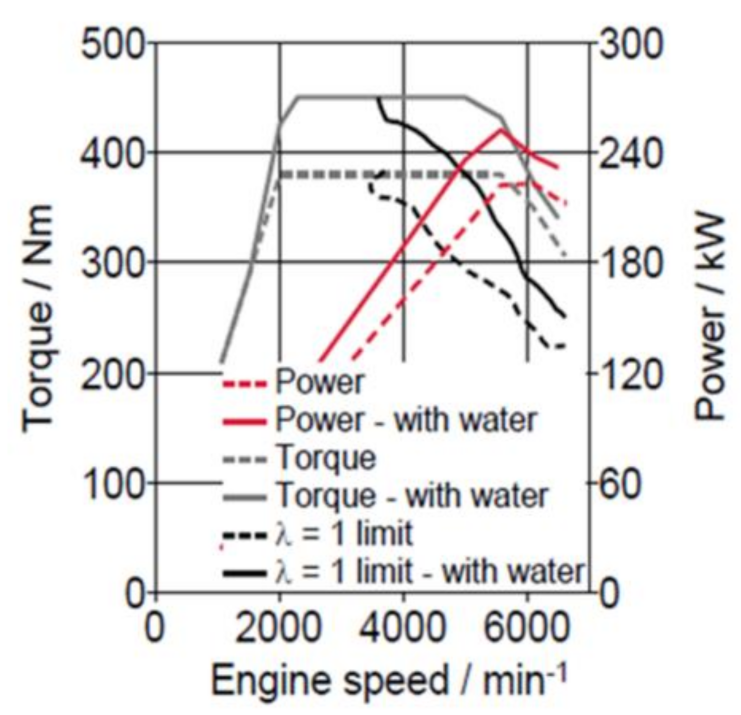
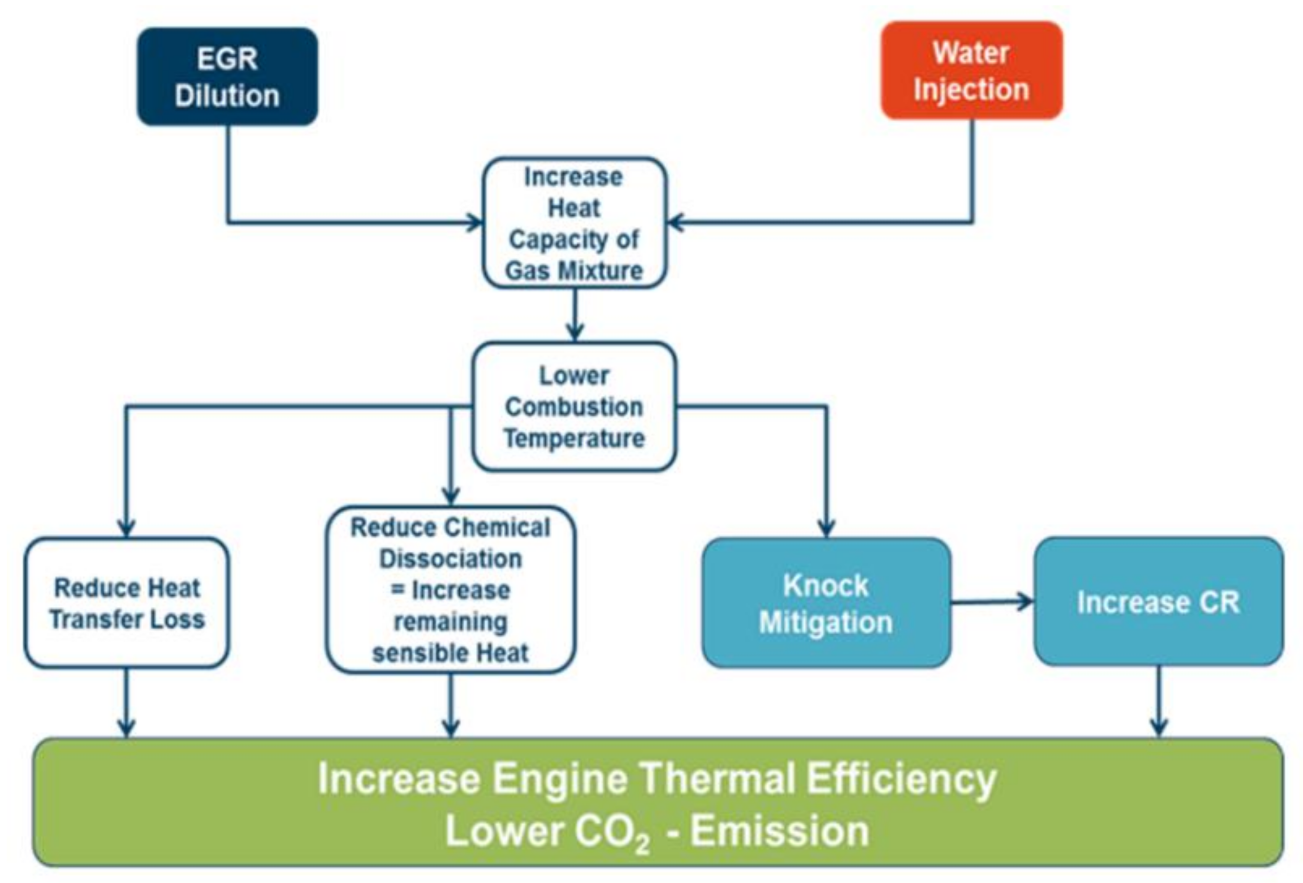
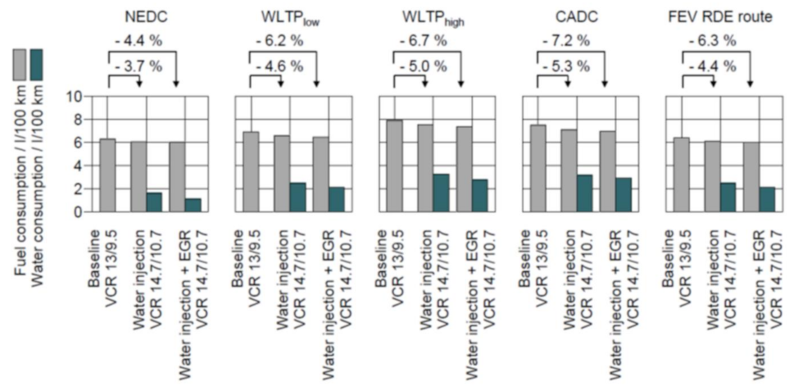
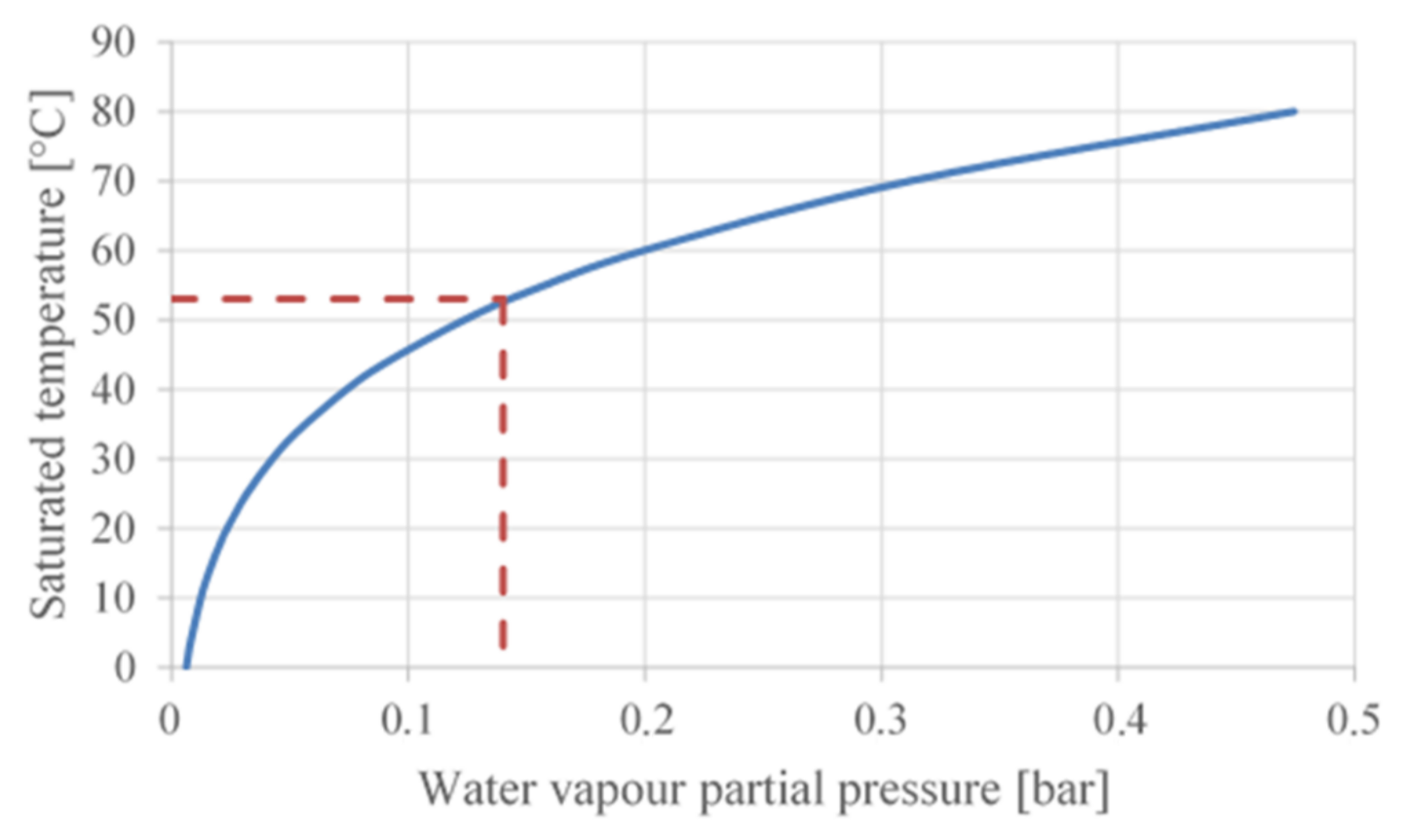
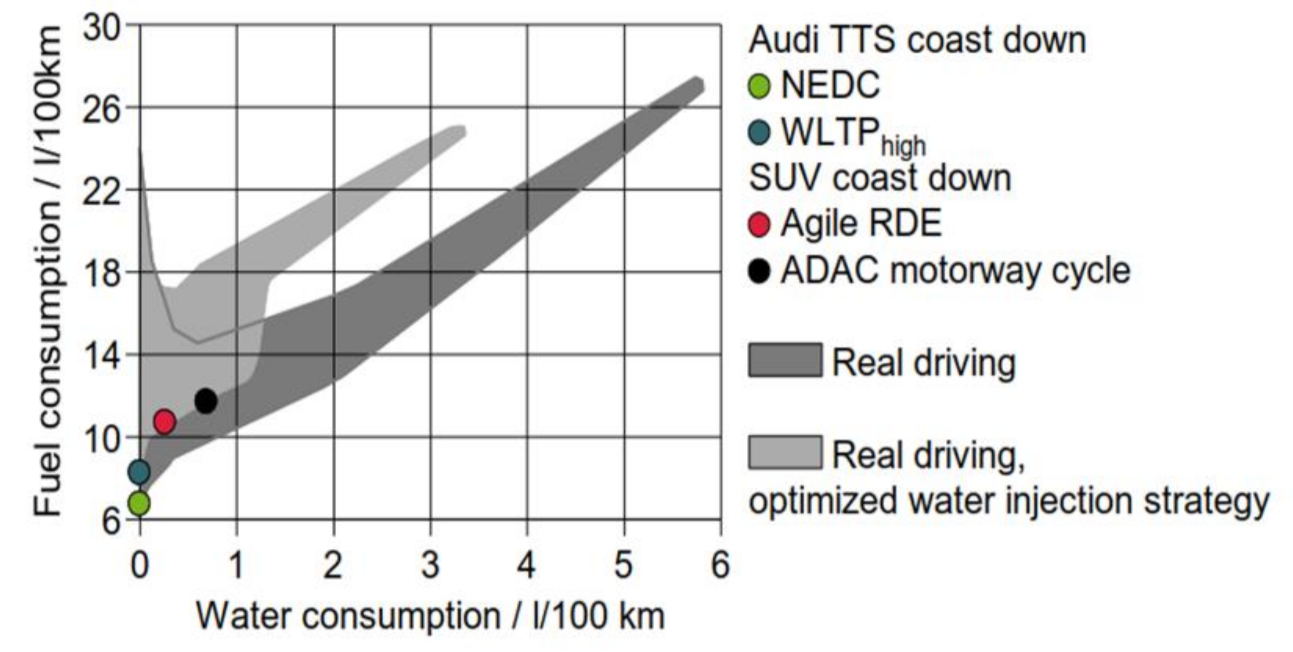
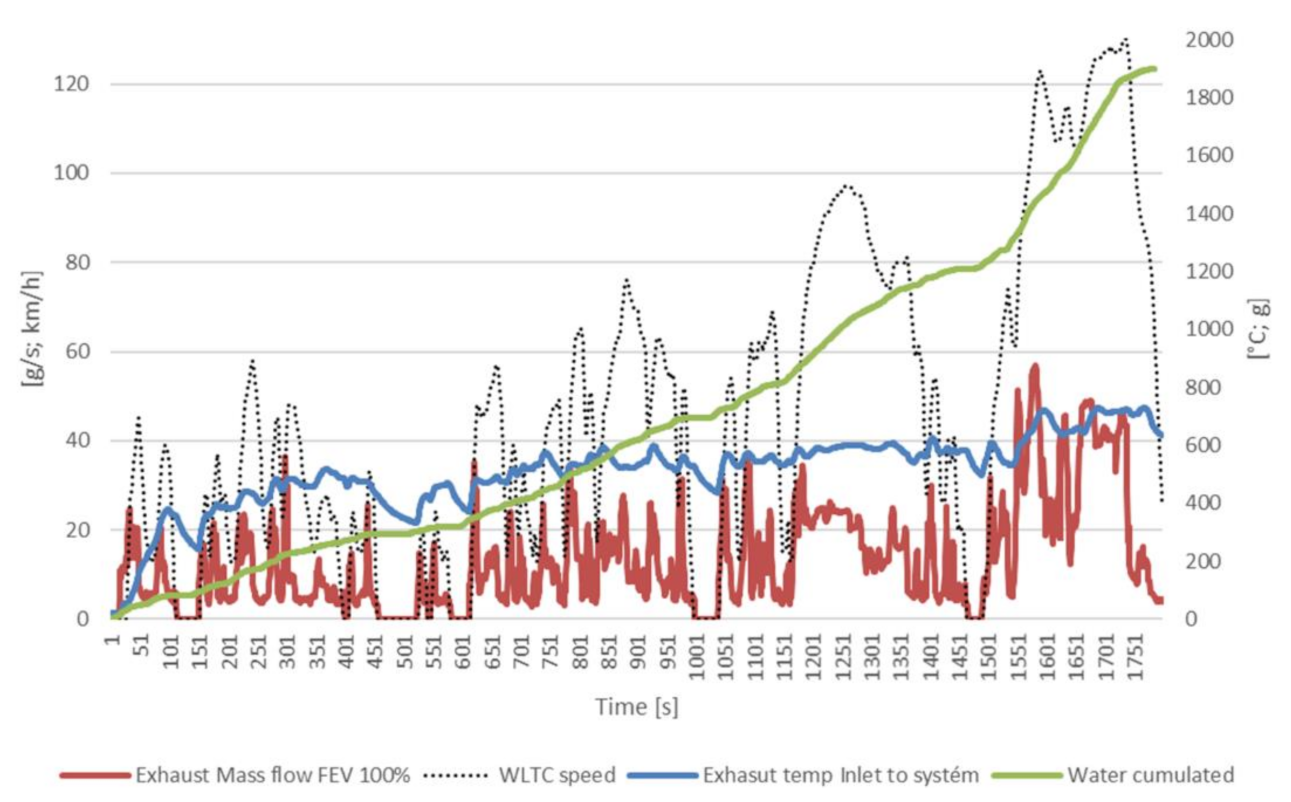


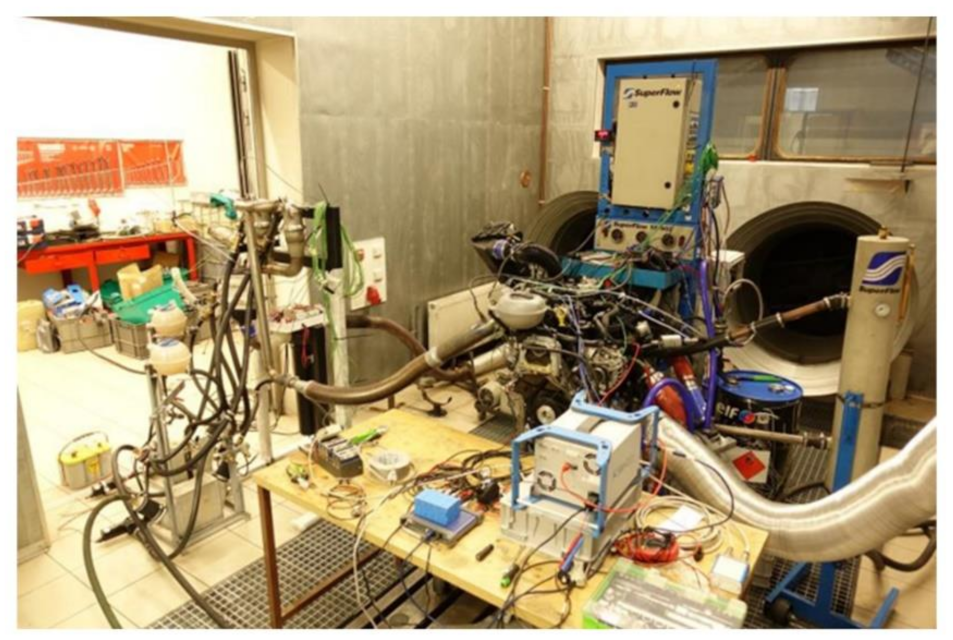

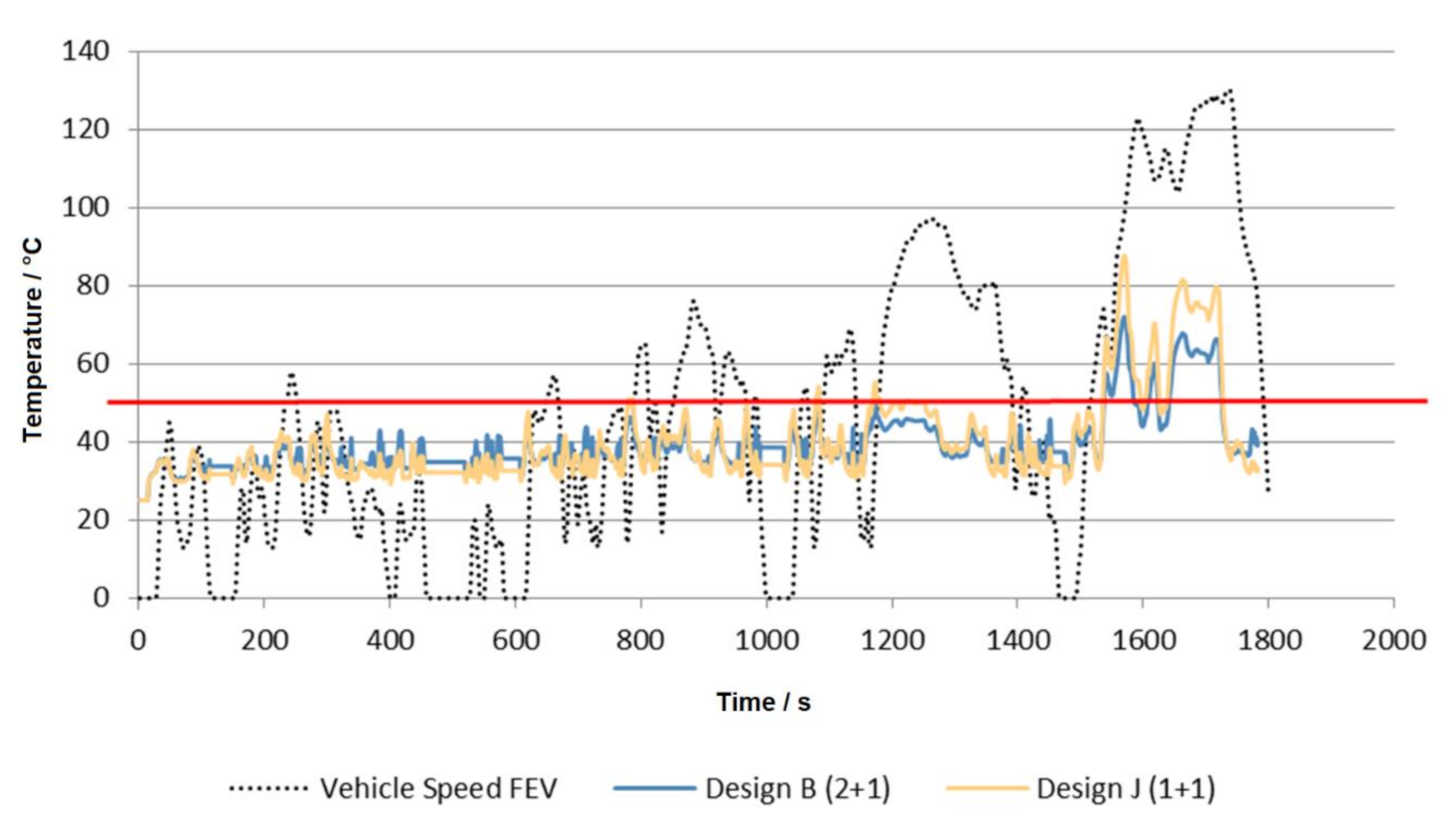
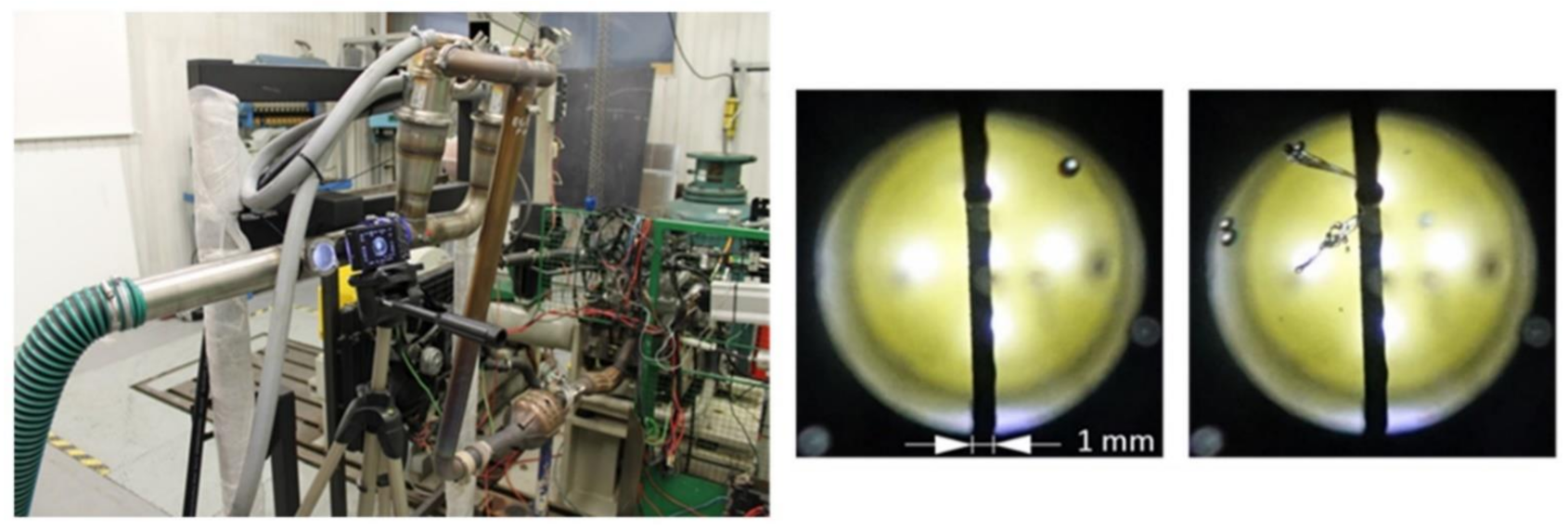

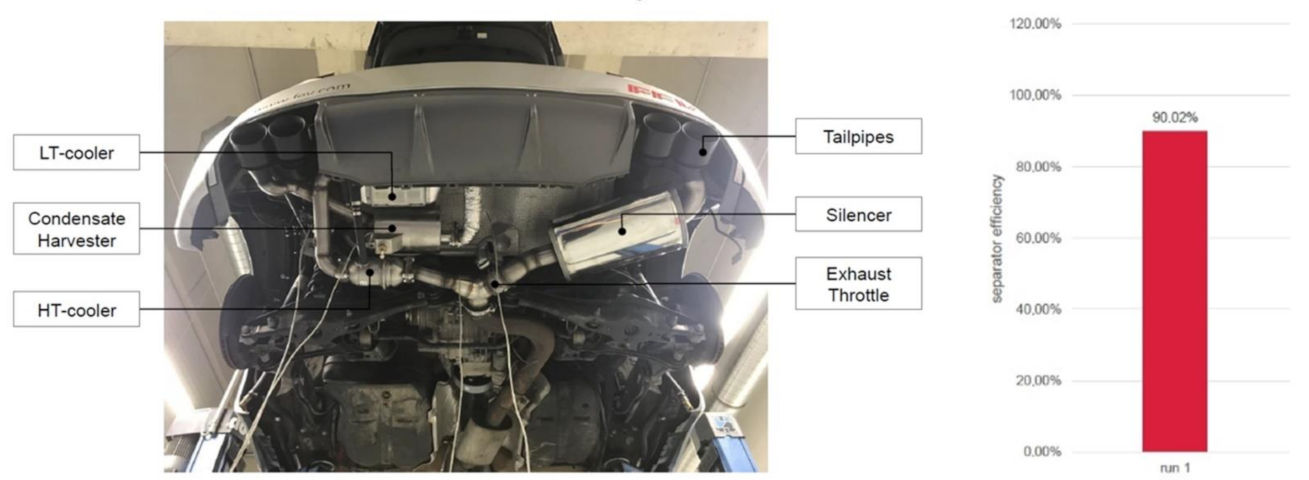
Publisher’s Note: MDPI stays neutral with regard to jurisdictional claims in published maps and institutional affiliations. |
© 2021 by the authors. Licensee MDPI, Basel, Switzerland. This article is an open access article distributed under the terms and conditions of the Creative Commons Attribution (CC BY) license (https://creativecommons.org/licenses/by/4.0/).
Share and Cite
Bazala, J.; Hébert, G.; Fischer, O.; Nothbaum, J.; Thewes, M.; Voßhall, T.; Diehl, P.; Kučera, P. Research and Development of Self-Contained Water Injection Systems. Int. J. Environ. Res. Public Health 2021, 18, 5392. https://doi.org/10.3390/ijerph18105392
Bazala J, Hébert G, Fischer O, Nothbaum J, Thewes M, Voßhall T, Diehl P, Kučera P. Research and Development of Self-Contained Water Injection Systems. International Journal of Environmental Research and Public Health. 2021; 18(10):5392. https://doi.org/10.3390/ijerph18105392
Chicago/Turabian StyleBazala, Jiri, Guillaume Hébert, Oliver Fischer, Jürgen Nothbaum, Matthias Thewes, Tobias Voßhall, Peter Diehl, and Pavel Kučera. 2021. "Research and Development of Self-Contained Water Injection Systems" International Journal of Environmental Research and Public Health 18, no. 10: 5392. https://doi.org/10.3390/ijerph18105392
APA StyleBazala, J., Hébert, G., Fischer, O., Nothbaum, J., Thewes, M., Voßhall, T., Diehl, P., & Kučera, P. (2021). Research and Development of Self-Contained Water Injection Systems. International Journal of Environmental Research and Public Health, 18(10), 5392. https://doi.org/10.3390/ijerph18105392





